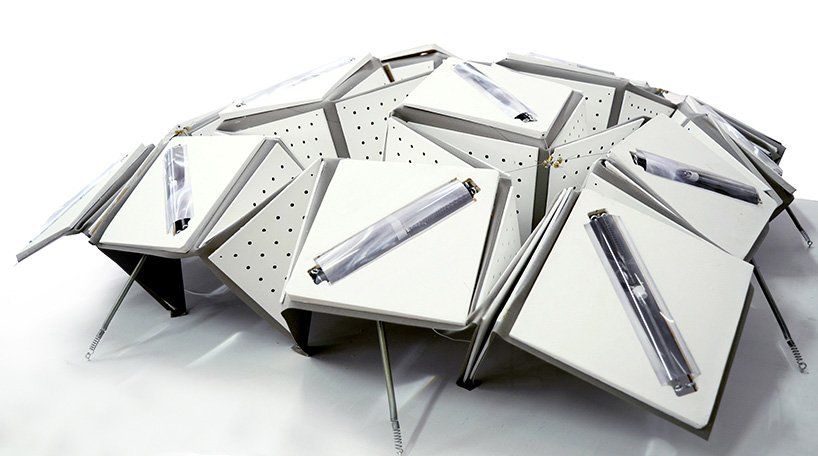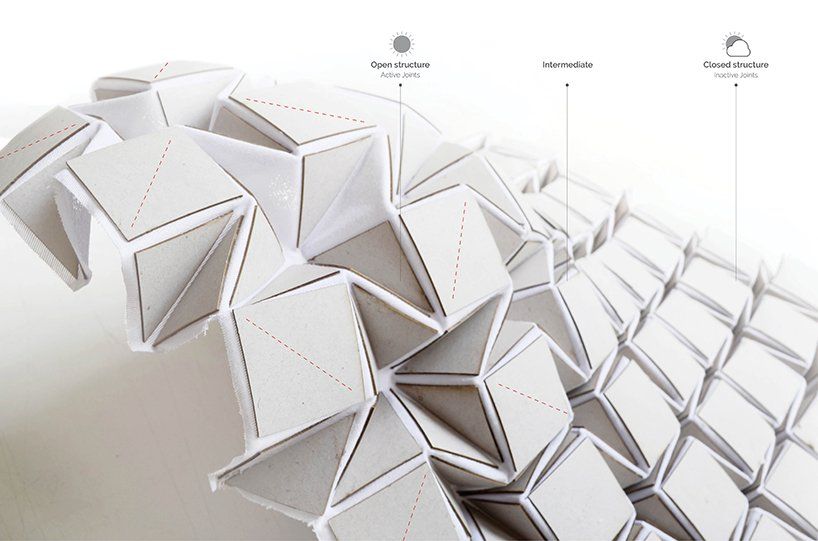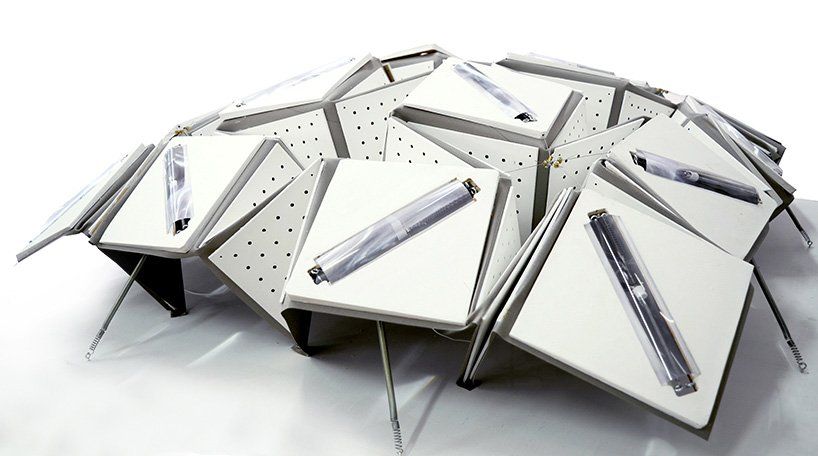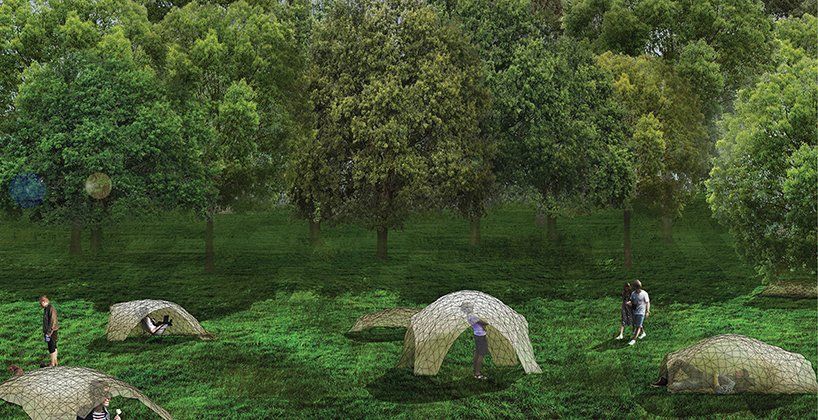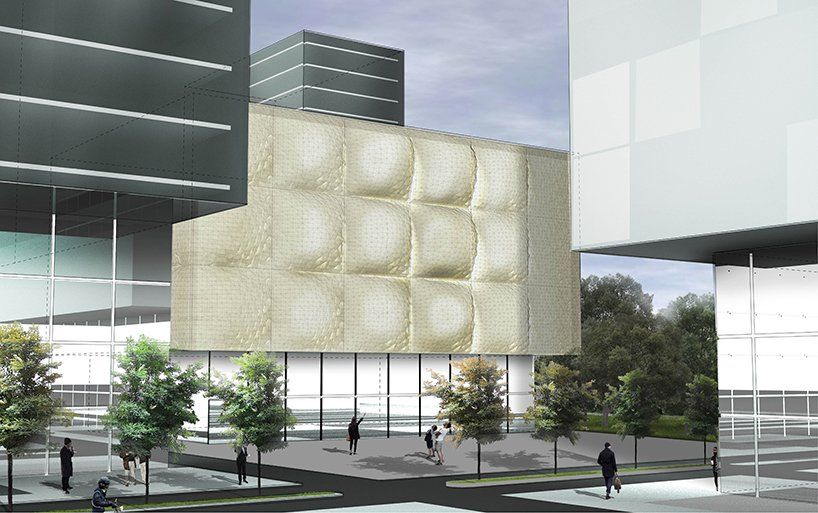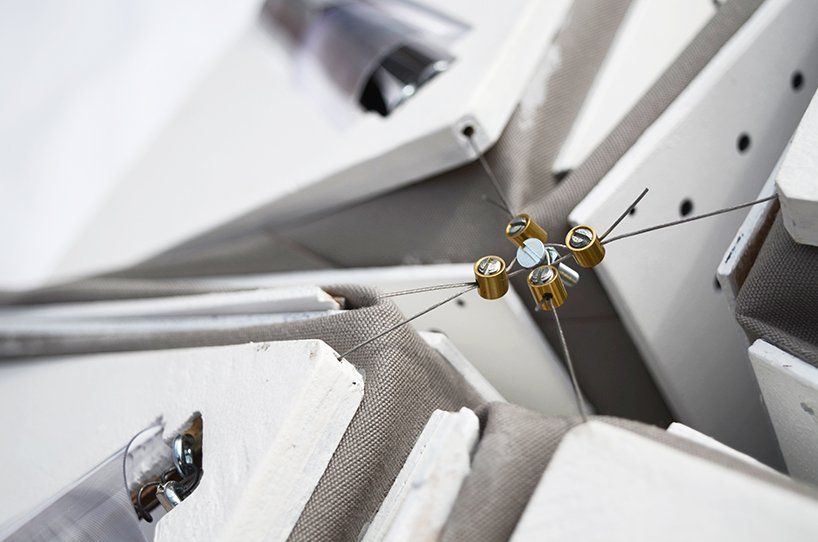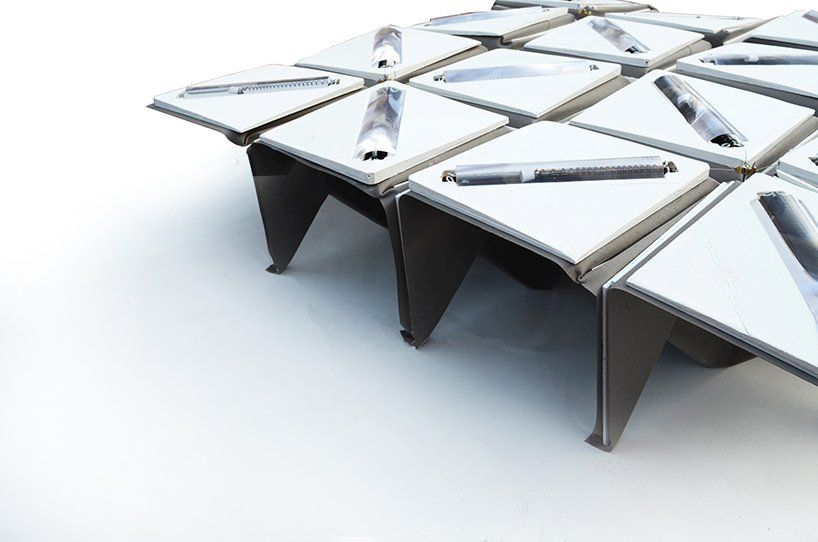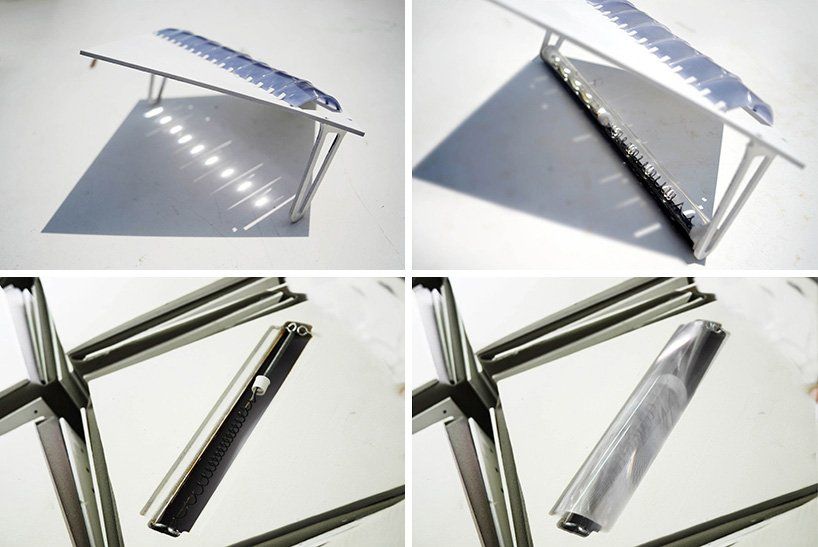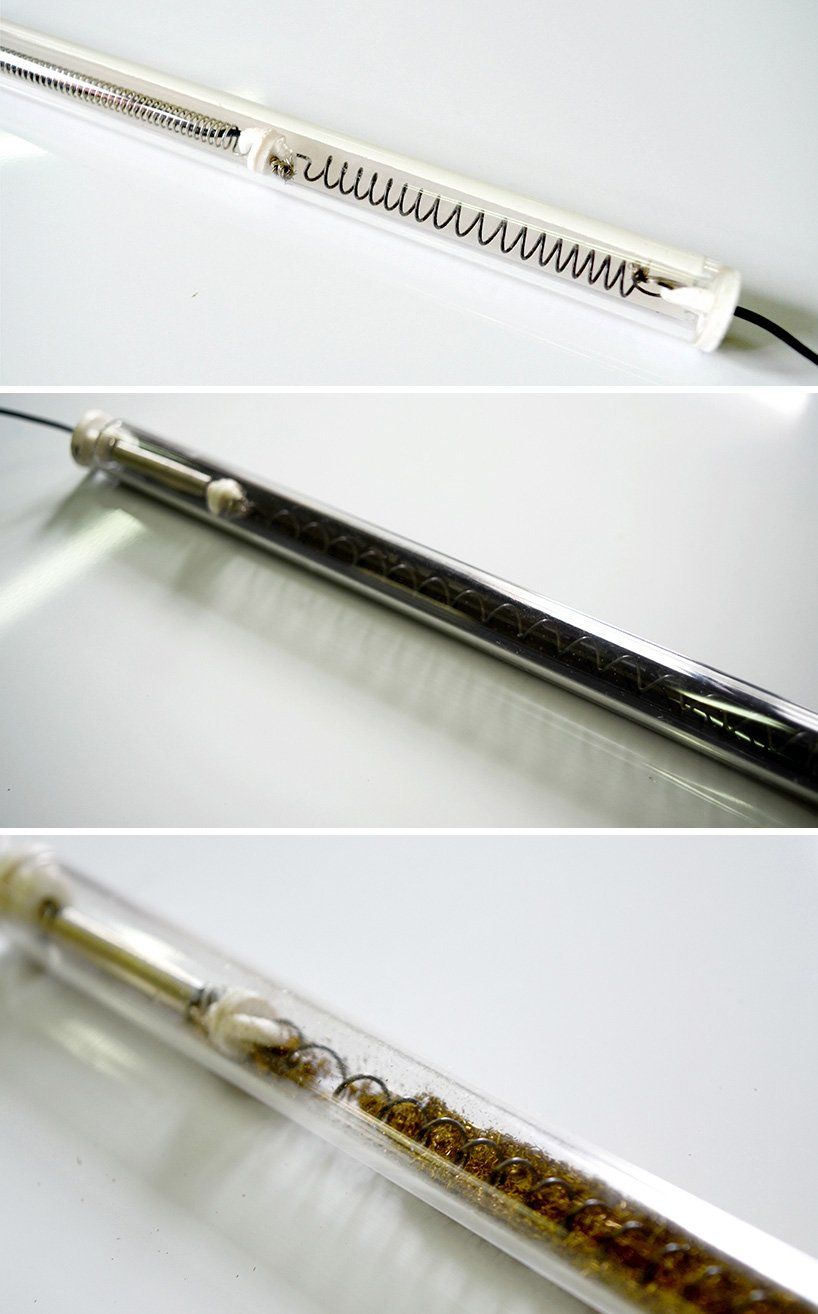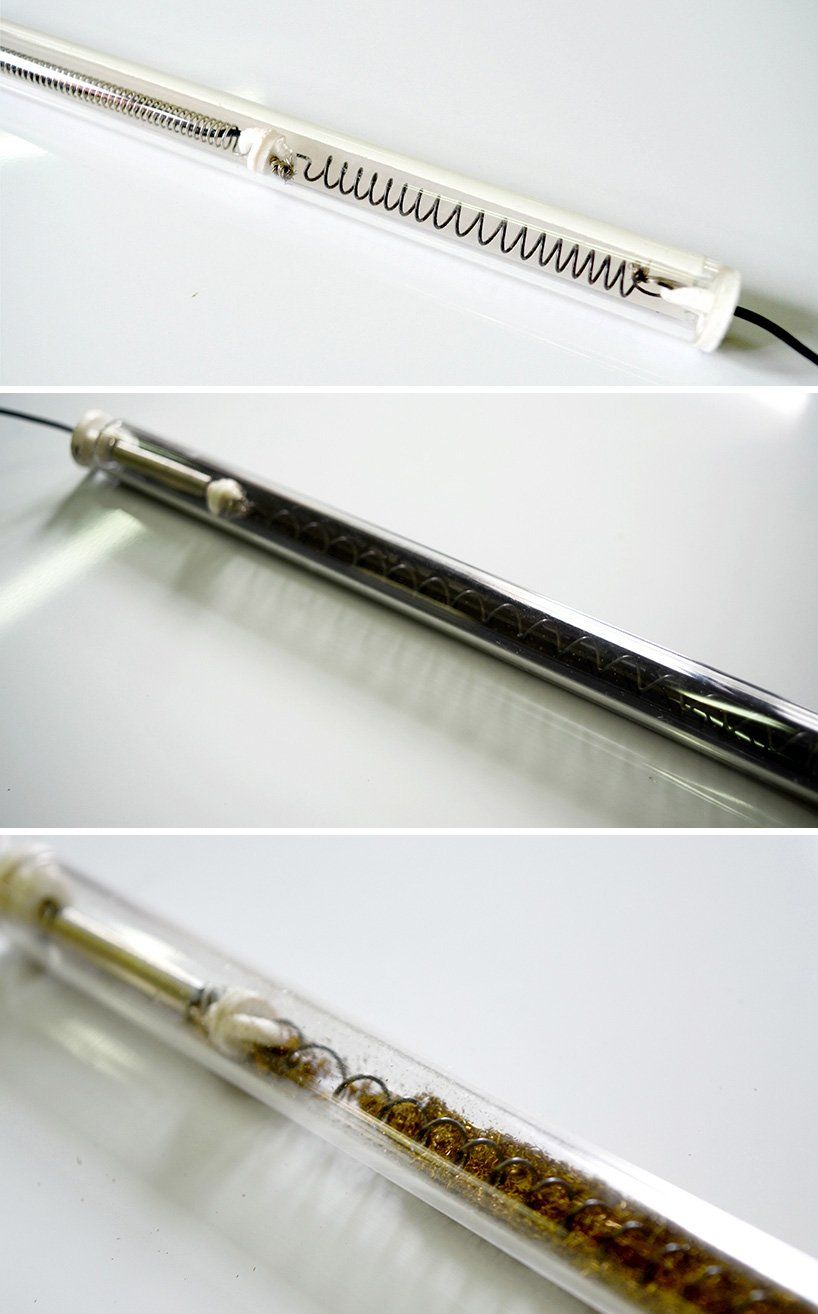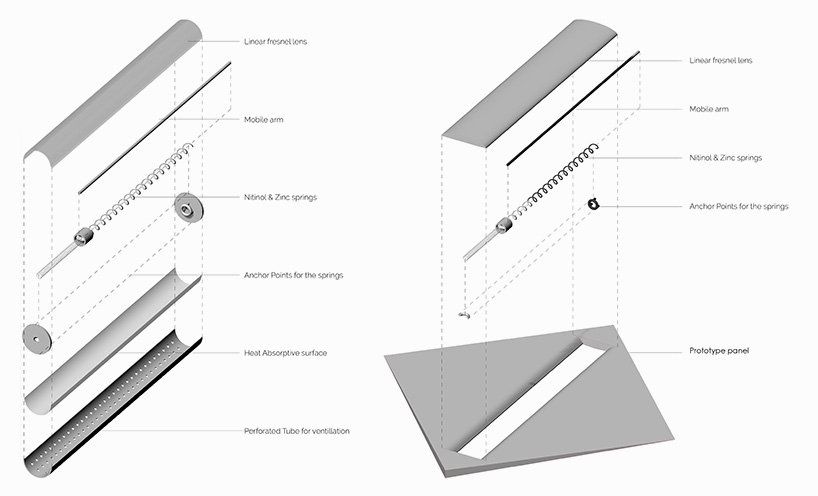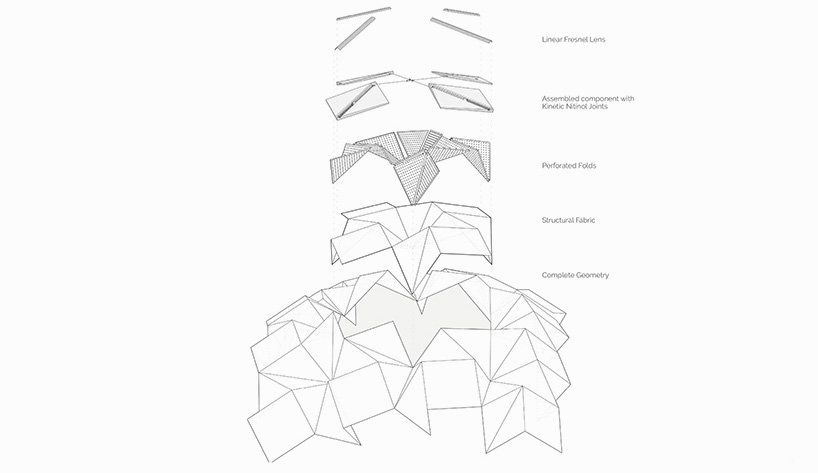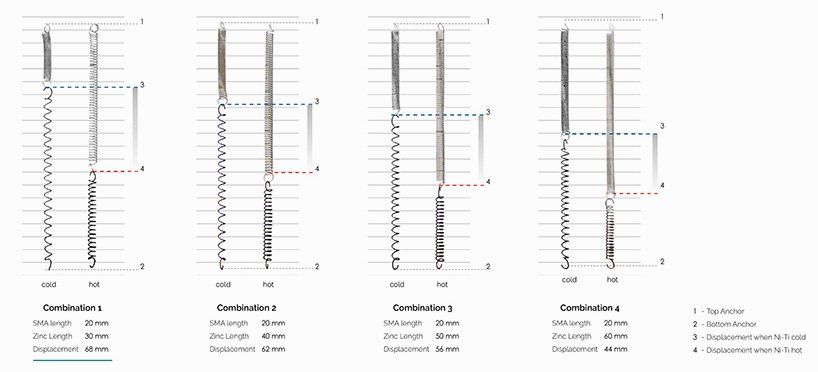Self-Adaptive Membrane
Energy obtained from the natural resources pool has always been bountiful. However, the availability and the ability to tap that potential have invariably been at reverse polarity. Small steps by man is a giant leap for mankind has been a common phrase appended to any stark innovations that see the light of the day and has the ability to tap into that unlimited pool, redirecting it toward common utility. Nonplused at the calamitous prospect of world recognition Nohelia Gonzalez and Shreyas More, Masters Research students from the Institute for Advanced Architecture of Catalonia, Spain stumbled across the common query upon how to harness the natural resources which literally have zero negative impact upon the environment. Their answer happens to be the Self-Adaptive Kinetic Envelope that taps into the largest available natural resource available for half a day at any point on Earth, Solar Energy. Built environment and Technology have been the pedestal for the information age and perceiving them as two physical entities are no longer plausible. The Self-Adaptive Membrane has created a paradigm that has integrated the static forms of architecture into the dynamic realm of technology. Quipped with the quirks to tickle the beast that of solar energy, this dynamic kinetic envelope propagates the maxim of the building energy utility output through adapting to the changing environment at the slightest of cues.
The two pivotal components that bring about the performative output of this membrane:
- The Kinetic Nitinol Joints
Space/Shape memory alloy Nitinol, the nickel-titanium amalgamation enables the kinetic movement of the membrane to slightest of environmental changes. The reason behind the choice of using nitinol is its ability to revert (contract) back to its original shape (Austenite State) at temperatures that range between 75oC – 85oC which is attainable at standard climatic conditions with a minor advancement which the common springs cannot achieve. Apart from this, the nitinol material has the capacity to pull forces up to 16N per 20mm of its length. This capacity to pull enormous force during its transformation makes it an ideal candidate to be used as a kinetic joint.
- Tessellation Adaptive Geometry
Apart from the dynamic 2-D motion of the nitinol springs, the folding fractal geometry help set in motion a dynamic geometry that has the ability to adapt to the various environmental changes. Since temperatures of 75oC – 85oC are closer to standard atmospheric conditions but not attainable in standard climates, Concentric Fresnel Lenses are adopted to meld solar radiation to heat the springs back to their original shape. The developed prototype has 16 Nitinol springs placed to form 4 cluster joints that mobilize the model. The joints are embedded in the folding geometry to uniformly enable it in opening in both volume and surface area alike. This minus the need for additional joineries. The only limitation to this technology is the non-availability of commercially manufactured Linear Fresnel Lenses to uniformly heat the Nitinol springs throughout to expand and contract without a potential change in its actual properties. If such custom made Linear Fresnel are made available in the common market, this technology might well become the much sought after Natural Energy utilitarian Building Envelope which propagates passive solar harpooning.
By: Achyuthan Ramaswamy
